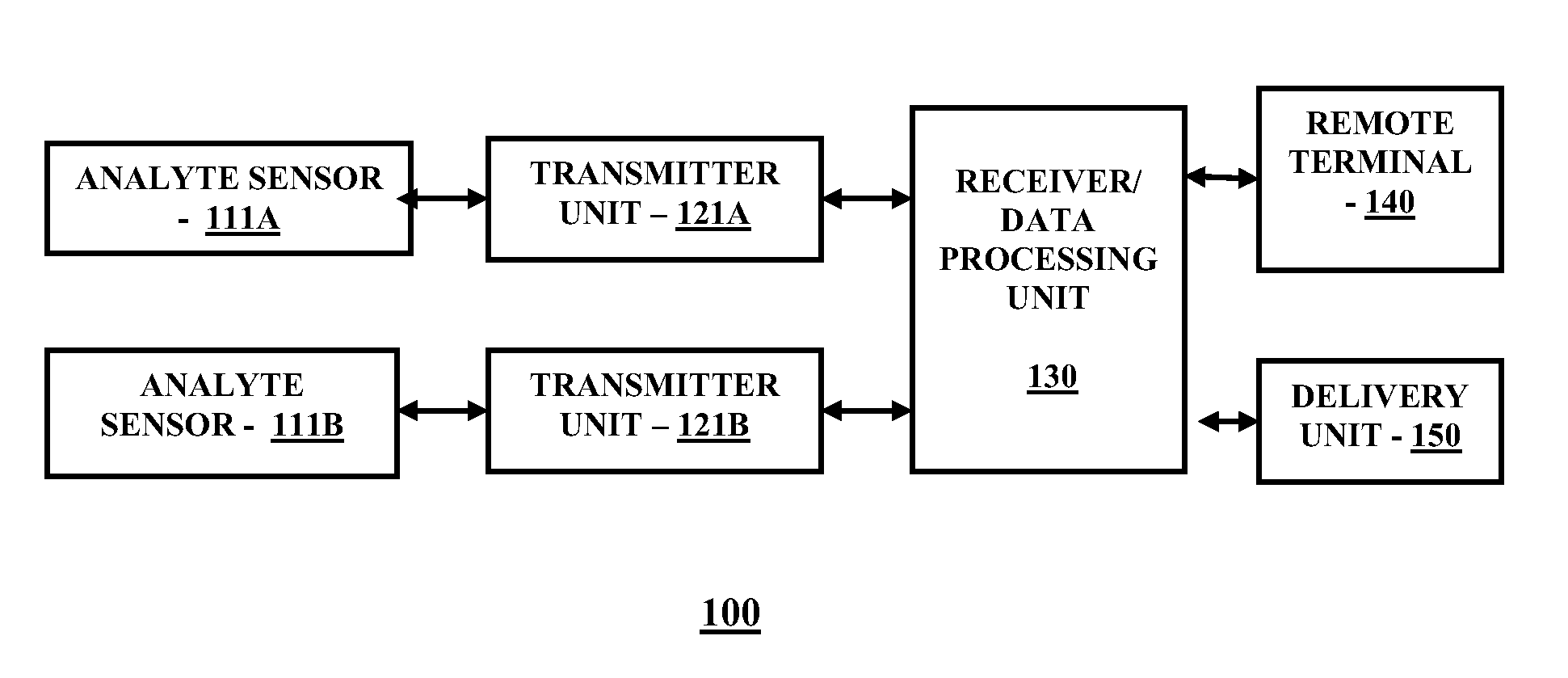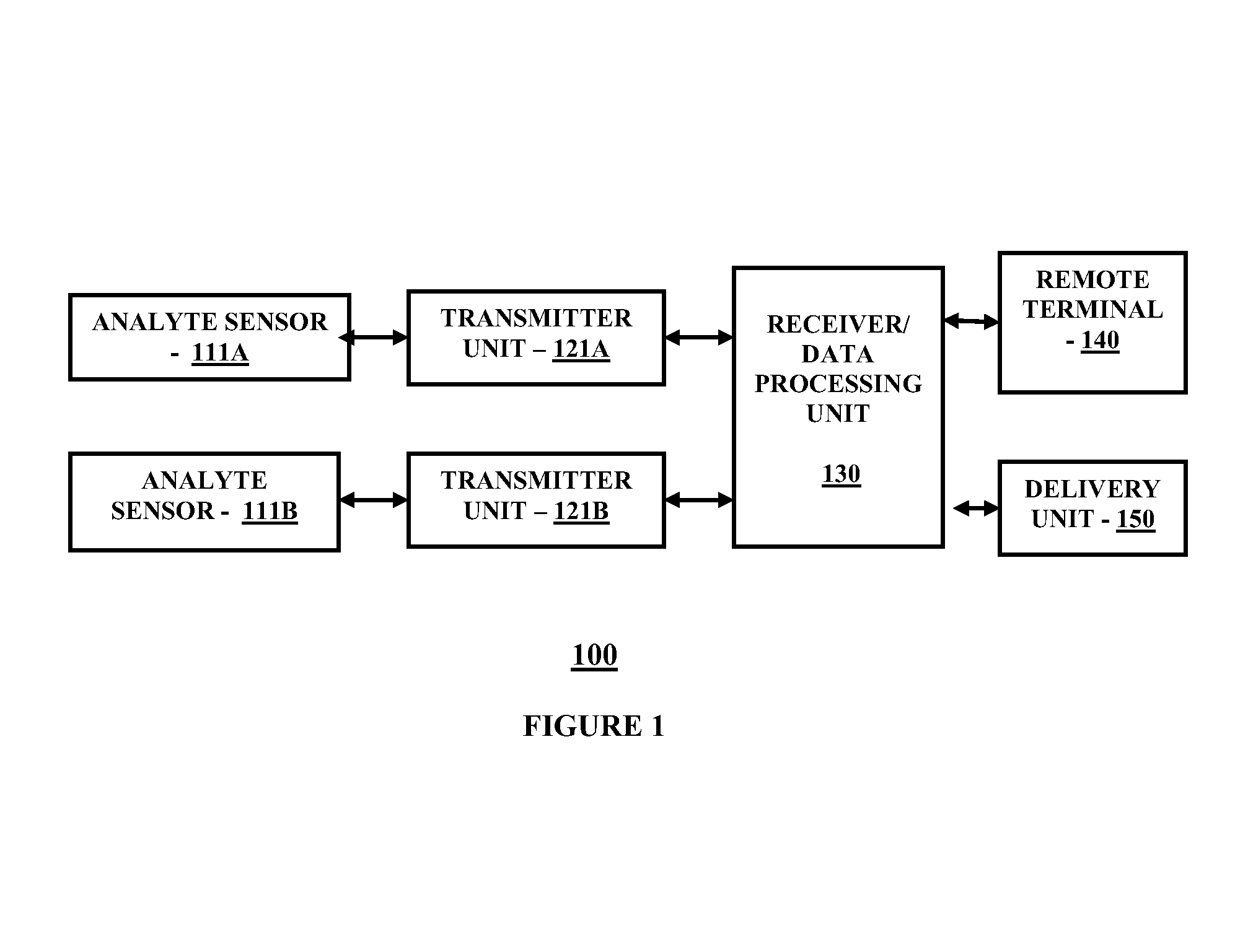Method and system for providing continuous calibration of implantable analyte sensors
a technology of analyte sensor and continuous calibration, which is applied in the field of ##uous monitoring of analytes, can solve the problems of gap in service, patient inability to monitor or determine analyte values such as glucose levels, and interruption of analyte monitoring or monitoring
- Summary
- Abstract
- Description
- Claims
- Application Information
AI Technical Summary
Benefits of technology
Problems solved by technology
Method used
Image
Examples
Embodiment Construction
[0017]FIG. 1 is a block diagram illustrating a continuous analyte monitoring system for practicing one embodiment of the present invention. Referring to FIG. 1, a continuous analyte monitoring system 100 includes analyte sensor 111A operatively coupled to a transmitter unit 121A, and analyte sensor 111B operatively coupled to transmitter unit 121B. Further shown is a receiver / data receiving unit 130 which is operatively coupled to transmitter unit 121A and transmitter unit 121B. The receiver / data processing unit 130 in one embodiment is configured to communicate with a remote terminal 140 and a delivery unit 150. The remote terminal 140 in one embodiment may include for example, a desktop computer terminal, a data communication enabled kiosk, a laptop computer, a handheld computing device such as a personal digital assistant (PDAs), or a data communication enabled mobile telephone. Moreover, the delivery unit 150 may include in one embodiment, but not limited to, an external infusio...
PUM
 Login to View More
Login to View More Abstract
Description
Claims
Application Information
 Login to View More
Login to View More - R&D
- Intellectual Property
- Life Sciences
- Materials
- Tech Scout
- Unparalleled Data Quality
- Higher Quality Content
- 60% Fewer Hallucinations
Browse by: Latest US Patents, China's latest patents, Technical Efficacy Thesaurus, Application Domain, Technology Topic, Popular Technical Reports.
© 2025 PatSnap. All rights reserved.Legal|Privacy policy|Modern Slavery Act Transparency Statement|Sitemap|About US| Contact US: help@patsnap.com



